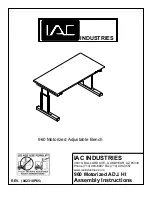
N2000H V3 Appliance
User Guide
1 Product Overview
Issue 04 (2018-11-06)
Huawei Proprietary and Confidential
Copyright © Huawei Technologies Co., Ltd.
23
Mod
ule
Feature
Description
M
from others and replace it.
Memory thermal
throttling
This feature automatically adjusts DIMM temperatures
to avoid DIMM damage due to overheat.
Rank sparing
This feature uses some memory ranks as backup ranks
to prevent the system from crashing due to
uncorrectable errors.
Memory address parity
protection
This feature detects memory command and address
errors.
Memory demand and
patrol scrubbing
This feature provides the memory patrol function for
promptly correcting correctable errors upon detection.
If these errors are not corrected promptly,
uncorrectable errors may occur.
Memory mirroring
This feature improves system reliability.
Single device data
correction (SDDC)
This feature provides a single-device, multi-bit error
correction capability to improve memory reliability.
Device tagging
This feature degrades and rectifies DIMM device
faults to improve DIMM availability.
Data scrambling
This feature optimizes data stream distribution and
reduces the error possibility to improve the reliability
of data streams in the memory and the capability to
detect address errors.
PCIe
PCIe advanced error
reporting
This feature improves Appliance serviceability.
QPI
Intel QPI link level retry
This feature provides a retry mechanism upon errors to
improve QPI reliability.
Intel QPI protocol
protection via CRC
This feature provides cyclic redundancy check (CRC)
protection for QPI packets to improve system
reliability.
OS
Core disable for fault
resilient boot (FRB)
This feature isolates the faulty CPU during startup to
improve system reliability and availability.
Corrupt data
containment mode
This feature identifies the memory storage unit that
contains corrupted data to minimize the impact on the
running programs and improve system reliability.
Socket disable for FRB
This feature isolates the faulty socket during startup to
improve system reliability.
Architected error records With the eMCA feature, the BIOS collects error
information recorded in hardware registers in
compliance with UEFI specifications, sends the error
information to the OS over the APEI of the Advanced
Configuration and Power Interface (ACPI), and locates
the error unit, improving system availability.















































